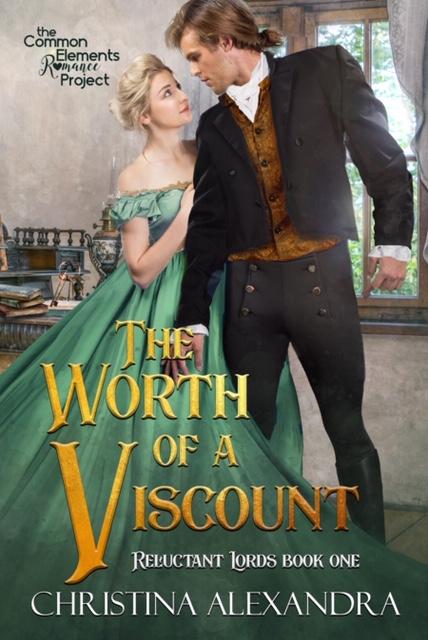Austen and Michaelmas
September 28, 2019 by Alina K. Field in category Writing tagged as #Historical, Hunting in the Regency, Jane Austen, Michaelmas, Mr. BingleyQuarter Days
I’m back with another Quarter Days’ post about Michaelmas
True Janeites (fans of Jane Austen) might be interested in a fun website I stumbled across while researching a story I have in the works.
The “Chronology of Pride and Prejudice, according to MacKinnon and Chapman” takes us through the detailed timeline of P&P’s events. (Oh, to be such a renowned author that fans prepare a chronology for your novel.) I don’t know about my fellow A Slice of Orange authors, but I always have to check and double-check that I have the story days correct.

Mr. Bingley moves in
Pride and Prejudice begins when Mr. Bingley takes the lease to Netherfield Manor and moves in.
As I’ve mentioned in earlier posts, Quarter Days might be occasions for feasting and parties, but they also had a commercial significance. Contracts were entered into or terminated, property was leased, and rents and wages were paid. Thus, as the story begins, a wealthy bachelor in need of a wife kicks off the story by becoming a neighbor of Mr. Bennet, a man with five unmarried daughters.

And Mr. Bingley has been kind enough to bring along an even richer bachelor friend! Well of course; late summer/early autumn was also the start of hunting season, when a man might welcome parties of friends to tramp through his fields and shoot birds. Mr. Bingley would want to show off his new domain to his influential friend, Mr. Darcy.
The Glorious Twelfth
Hunting season started on the Glorious Twelfth of August, after the social and parliamentary season ended. Presumably farmers had finished the harvest, so the crops were safe from hordes of hunters.

Bird season began a bit later, in September running through October. Hunting in Britain was very much dominated by the elites, even during periods of economic downturn and food scarcity. Ownership of weapons and even dogs was restricted, and penalties for poaching might include transportation. (See my post about this topic.)
Autumn was prime house party season also because families had shipped off their young males to boarding school in time for the Michaelmas term. No young boys would be running about distracting the shooters or worse, accidentally shooting themselves in the foot. They’d be back home though for the next Quarter Day, Christmas, which is when I’ll return to A Slice of Orange. See you then!
For more about Michaelmas, take a look at my earlier posts: Michaelmas Goose, and A Michaelmas Menu.
8 0 Read moreQuarter Days: A Festive Menu
September 28, 2018 by Alina K. Field in category Quarter Days by Alina K. Field tagged as A Lady's Assistant, Festive Menus, Historical Cookbooks, MichaelmasA Michaelmas Menu
 A quarter of the year has passed since my last post, and I am back to talk again about Michaelmas!
A quarter of the year has passed since my last post, and I am back to talk again about Michaelmas!
In my post last year, Michaelmas Goose, I mentioned that September 29th, Michaelmas, was apparently a traditional feasting holiday.
This year, I cordially invite you to celebrate the holiday with me.
In my family tradition, holiday feasts are eating extravaganzas, and so I present our Bill of Fare: a family meal in two courses, the first one of eleven dishes, the second of fifteen, including a lovely green Michaelmas goose as the crowning dish. You will not go home hungry!
First Course
- Turbot
- Forced Cucumbers
- Harrico of Lamb Steaks
- Cauliflower
- Very Small Ham
- French Pie
- Chickens
- Beans
- Beef Olives
- French Beans
- Haunch of Venison
Second Course
- Pigeons, Stewed
- Cray Fish in Jelly
- Crocant
- Potted Wheat Ears
- Raspberry Cream
- Pippins Stewed, set in Custard
- Artichoke Bottoms fricasseed
- Syllabubs and Jellies
- Stewed Pease and Lettuce
- Brandy Fruit in Glasses
- Pistachia Cream
- Potted Leveret
- Melon in Flummery
- Smelts in Jelly
- Green Goose
The Lady’s Assistant
 I owe this excellent menu to the 1787 edition of Mrs. Charlotte Mason’s The Lady’s Assistant:
I owe this excellent menu to the 1787 edition of Mrs. Charlotte Mason’s The Lady’s Assistant:
There are many books of RECEIPTS, but I have never met with one that contained any instructions for Regulating a Table.–The great inconvenience I experienced, on commencing mistress of a family, from the want of such assistance, has since prompted me to attempt a set of bills of fare, which I flatter myself will be of great use to ladies in general…It is certain, that a woman never appears to greater advantage than at the head of a Well-Regulated Table…
Mrs. Mason was a “Professed Housekeeper, who had Upwards of Thirty Years Experience in Families of the First Fashion”.
Choosing your Goose
The author provides not just menus and recipes, but also, in an age when food was much more likely to be locally sourced, advice choosing a goose to cook:
The bill and feet of a young goose will be yellow, and there will be but few hairs upon them; if old, they will be red: if it is fresh, the feet will be limber; if stale, they will be stiff and dry. Green geese are in season from May or June, till they are three months old: they should be scalded. A stubble goose is good till it is five or six months old, and should be picked dry. The same rules will do for wild geese, with regard to their being old or young.
Cooking your Goose
A green goose will not take more than three quarters of an hour at the fire. Unless it is particularly liked, it is not usual to put any thing into it but a little pepper and salt, a little gravy in the dish, and some in a boat. There must be green sauce in another boat, made as follows:–About half a pint of veal broth, the juice of an orange or lemon boiled up for six or seven minutes, then put in some juice of sorrel, enough to make it green, and just boil it up; stir it all the time for fear it should curdle, which it is apt to do, and it ought to be very smooth.

Gouty Gourmands at Dinner, Thomas Rowlandson
Are you scratching your head over some of these dishes? The Lady’s Assistant provides explanations and receipts…er, recipes.
I confess, I had to look up many of them, and I’m not at all sure where I’ll find a leveret to serve, much less a potted one! Any suggestions?
Have a wonderful autumn, and if I don’t see you at my dinner party, I will meet you here again on December 28th!
0 0 Read more
Quarter Days: Michaelmas Goose
September 28, 2017 by Alina K. Field in category Quarter Days by Alina K. Field, Writing tagged as Harvest Festivals, historical, John Milton, Michaelmas, Paradise Lost, Quarter Days, St. Michael
A Michaelmas Goose Market
Michaelmas
Greetings to everyone, especially my fellow history nerds. It’s September 28th, time for another installment of my Quarter Days blog.

Southwark Fair, September 1733, Hogarth
I’m a huge fan of feasting holidays, and much to my surprise, Michaelmas, September 29th, is one of those.
Harvest Time
It makes sense though. In every culture where there’s an autumn harvest, there’s an autumn harvest festival, like a Polish Dozynki or a German Oktoberfest. Some sources say that Michaelmas is still celebrated in England with roast goose and other goodies, like this fun Michaelmas dragon bread.
Last June I blogged about Midsummer’s Day, one of the Quarter Day holidays, and pretty self-explanatory. The same is true for this holiday—tomorrow is the feast of St. Michael the Archangel, he who battled Satan. 
In Fiction
I first encountered a mention of Michaelmas in Jane Austen’s Persuasion, and most recently saw a reference in fellow Regency author Caroline Warfield‘s latest release, The Reluctant Wife, where a character must get back to England for the Michaelmas Term at his university. For a historical author, a mention of Michaelmas is a wonderful device for setting the time of the story without citing a specific date.
Paradise Lost
One blogger claims that St. Michael was popular in Regency England because of the influence of John Milton’s Paradise Lost, a late seventeenth-century epic work. Researching this post inspired me to pull out my copy of the Complete Poems and Major Prose of Milton which, to be honest, I haven’t opened since my university days.
Paradise Lost is something of an early paranormal story of nearly invincible beings and shapeshifters:
…the sword of Michael from the Armory of God was giv’n him temper’d so, that neither keen nor solid might resist that edge: it met the sword of Satan with steep force…deep ent’ring sher’d all his right side; then Satan first knew pain…but th’ Ethereal substance clos’d not long divisible…Yet soon he heal’d; for Spirits that live throughout vital in every part not as frail man….cannot but by annihilating die…All Heart they live, all Head, all Eye, all Ear, All Intellect, all Sense, and as they please, they Limb themselves, and color, shape or size assume as likes them best…

A Servant Hiring Hall, Rowlandson
Contracts, Rents, and Work
And of course, as I mentioned in my June post, Michaelmas was a day to pay rents (possibly in kind, with a fatted goose) to hire and pay servants, and sign contracts.
Do you celebrate Michaelmas? If so, please share in the comments!
Have a magical Michaelmas, and I shall return in three months to talk about the next Quarter Day, Christmas!
2 0 Read more
Affiliate Links
A Slice of Orange is an affiliate with some of the booksellers listed on this website, including Barnes & Nobel, Books A Million, iBooks, Kobo, and Smashwords. This means A Slice of Orange may earn a small advertising fee from sales made through the links used on this website. There are reminders of these affiliate links on the pages for individual books.
Search A Slice of Orange
Find a Column
Archives
Featured Books
Scream of the Silent Sun
Will Quinn Thomas find her missing brother in time to save him?
More info →
THE FORMIDABLE EARL
He's breaking the rules for one woman, and coming dangerously close to falling in love…
More info →THE WORTH OF A VISCOUNT
After four seasons without a single offer of marriage, Lady Maxine Pearson realizes perfection is decidedly overrated.
More info →Newsletter
Contributing Authors
Search A Slice of Orange
Find a Column
Archives
Authors in the Bookstore
- A. E. Decker
- A. J. Scudiere
- A.J. Sidransky
- A.M. Roark
- Abby Collette
- Alanna Lucus
- Albert Marrin
- Alice Duncan
- Alina K. Field
- Alison Green Myers
- Andi Lawrencovna
- Andrew C Raiford
- Angela Pryce
- Aviva Vaughn
- Barbara Ankrum
- Bethlehem Writers Group, LLC
- Carol L. Wright
- Celeste Barclay
- Christina Alexandra
- Christopher D. Ochs
- Claire Davon
- Claire Naden
- Courtnee Turner Hoyle
- Courtney Annicchiarico
- D. Lieber
- Daniel V. Meier Jr.
- Debra Dixon
- Debra H. Goldstein
- Debra Holland
- Dee Ann Palmer
- Denise M. Colby
- Diane Benefiel
- Diane Sismour
- Dianna Sinovic
- DT Krippene
- E.B. Dawson
- Emilie Dallaire
- Emily Brightwell
- Emily PW Murphy
- Fae Rowen
- Faith L. Justice
- Frances Amati
- Geralyn Corcillo
- Glynnis Campbell
- Greg Jolley
- H. O. Charles
- Jaclyn Roché
- Jacqueline Diamond
- Janet Lynn and Will Zeilinger
- Jaya Mehta
- Jeannine Atkins
- Jeff Baird
- Jenna Barwin
- Jenne Kern
- Jennifer D. Bokal
- Jennifer Lyon
- Jerome W. McFadden
- Jill Piscitello
- Jina Bacarr
- Jo A. Hiestand
- Jodi Bogert
- Jolina Petersheim
- Jonathan Maberry
- Joy Allyson
- Judy Duarte
- Justin Murphy
- Justine Davis
- Kat Martin
- Kidd Wadsworth
- Kitty Bucholtz
- Kristy Tate
- Larry Deibert
- Larry Hamilton
- Laura Drake
- Laurie Stevens
- Leslie Knowles
- Li-Ying Lundquist
- Linda Carroll-Bradd
- Linda Lappin
- Linda McLaughlin
- Linda O. Johnston
- Lisa Preston
- Lolo Paige
- Loran Holt
- Lynette M. Burrows
- Lyssa Kay Adams
- Madeline Ash
- Margarita Engle
- Marguerite Quantaine
- Marianne H. Donley
- Mary Castillo
- Maureen Klovers
- Megan Haskell
- Melanie Waterbury
- Melisa Rivero
- Melissa Chambers
- Melodie Winawer
- Meriam Wilhelm
- Mikel J. Wilson
- Mindy Neff
- Monica McCabe
- Nancy Brashear
- Neetu Malik
- Nikki Prince
- Once Upon Anthologies
- Paula Gail Benson
- Penny Reid
- Peter J Barbour
- Priscilla Oliveras
- R. H. Kohno
- Rachel Hailey
- Ralph Hieb
- Ramcy Diek
- Ransom Stephens
- Rebecca Forster
- Renae Wrich
- Roxy Matthews
- Ryder Hunte Clancy
- Sally Paradysz
- Sheila Colón-Bagley
- Simone de Muñoz
- Sophie Barnes
- Susan Kaye Quinn
- Susan Lynn Meyer
- Susan Squires
- T. D. Fox
- Tara C. Allred
- Tara Lain
- Tari Lynn Jewett
- Terri Osburn
- Tracy Reed
- Vera Jane Cook
- Vicki Crum
- Writing Something Romantic
Affiliate Links
A Slice of Orange is an affiliate with some of the booksellers listed on this website, including Barnes & Nobel, Books A Million, iBooks, Kobo, and Smashwords. This means A Slice of Orange may earn a small advertising fee from sales made through the links used on this website. There are reminders of these affiliate links on the pages for individual books.








































